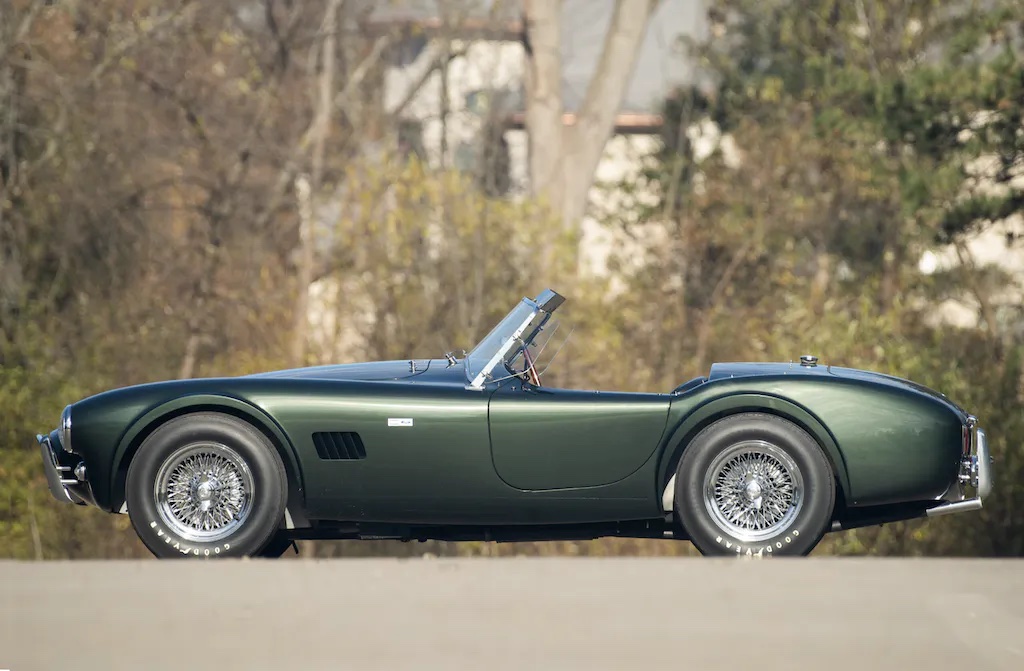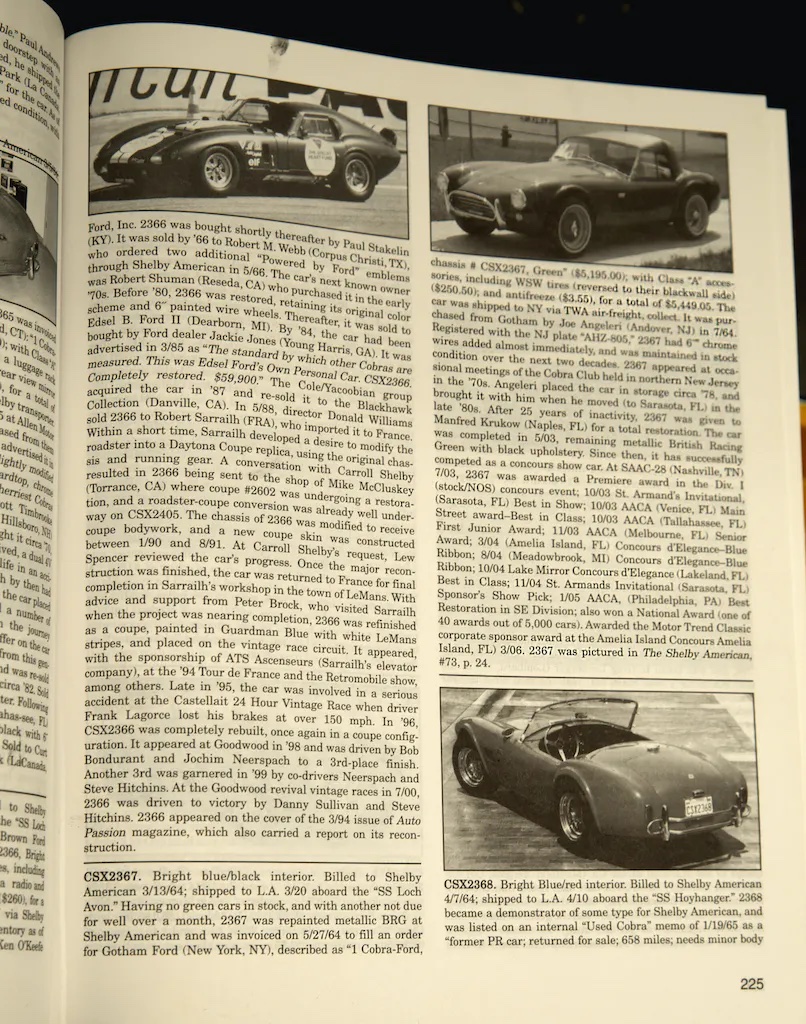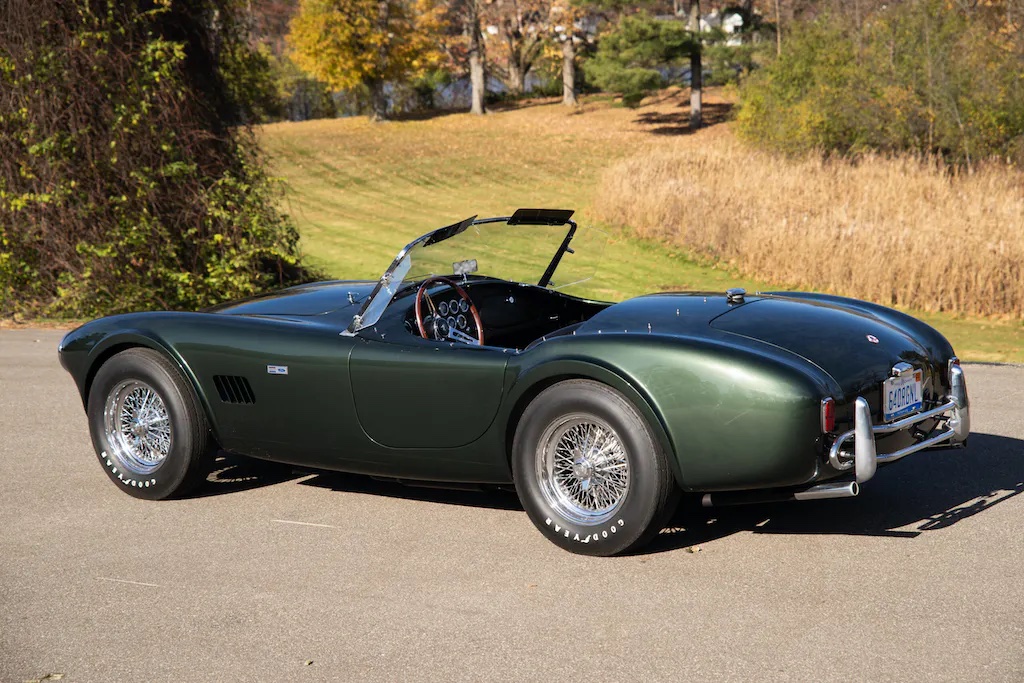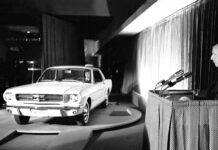It was more than twenty years ago that Dave Wathen opened his February 2002 copy of Road & Track to an article by Peter Egan titled “Cross Country Cobra.” In the article, the celebrated journalist and road warrior described a trip he took with Tom Cotter, who is now the author and host of Hagerty’s Barn Find Hunter. Tom had just purchased an all original ’65 Cobra, but he was in North Carolina and the Cobra was in California. He invited Egan to join him on an epic drive to take the Cobra home. Egan happily signed on to the adventure.

Wathen, a mechanical engineer and a car guy to the core, was already the owner of multiple sports cars. Among them were Jaguars, and with those overseas aspirations satisfied to a great degree, he had resolved to pursue something at least American in concept if not fully in parentage.
Egan’s words drove Wathen into the Cobra camp: “Much as I love the MG’s, Healeys and Triumphs of the same era,” Egan wrote, “there is something quite different about a Cobra, some quality that always makes the hair stand up on the back of my neck. The car bristles with subtle chrome details overlaid on a set of beautiful curves, and it gives off an aura of aggression that few other English roadsters possess.”
Later, in recounting his experience behind the wheel Egan would add, “…it’s a car of considerable finesse and refined ergonomics.” And later, “Strangely, what the Cobra reminds me of most, in both its exhaust note at cruising speed and its solid, no-nonsense feel, is my friend Tony Buechler’s P51D fighter plane.”

The description of that road trip continued for several more pages. With each word that Wathen read, he became more convinced that a Shelby Cobra was the muscular American motoring experience he needed. The article specifically steered him toward an early Cobra like Cotter and Egan drove, the model with the perky Ford 289 cubic-inch engine and pedigree of racing success.
Funding that purchase was another matter. Even 20 years ago, genuine Cobras cost well into six figures. (Cotter, when asked what he had paid for his car in 2002, revealed that it was more than $100,000 but less than $200,000,) And while Wathen was on a solid career path working for a large manufacturer of tech products, he wasn’t yet that liquid.

By 2007, Wathen’s career had advanced to the point at which owning Cobra was possible. The cash was there, he just had to find the car—no easy matter given the relatively low production volume and the attrition levied on many early Cobras at race tracks. There are thousands of Cobra replicas for every real Cobra, and some of them masquerade as the real thing. Even among the genuine Cobras there are few in what might resemble original condition. Many that were raced were crashed and repaired, frequently with parts that were not the genuine item. To find the right car, he would need professional help.
Ned Scudder, registrar of the Shelby American Auto Club (SAAC), helped put Wathen on the path. The club keeps track of everything Shelby-related, right up to current products. If an original Cobra’s chassis number is listed in the register, one can be fairly certain that it’s the real thing. In addition to getting tips about impending sales from Scudder, Wathen hired an expert to look at cars for him.
Finding the right car wasn’t easy. Most of the available ones had serious faults. One candidate that Wathen initially liked had been hit in the back and half of the body had been replaced. There was also unresolved chassis damage.

Eventually, Scudder tipped off Wathen about a very special car. The car, listed in the Cobra registry as chassis number CSX2367, was a showpiece. At a club-sponsored concours it had earned an SAAC Premiere award, the highest honor bestowed on cars shown in the organization’s events. It won based on both authenticity and condition.
“The price was high, but I gritted my teeth and did it. It seemed like a lot at the time, but it has proved to be a good investment as Cobra prices have continued to climb.”

The car’s one and only prior owner, Joe Angeleri, had purchased it new in the summer of ’64 from Manhattan’s Gotham Ford for $6712. It had been ordered by another customer who insisted on green finish. At the time, no green cars had been delivered by AC Cars, the provider of Cobra bodies and chassis, so Shelby pulled a blue Cobra out of stock and refinished it in a metallic color called Highlander Green, from Ford’s Lincoln palette.

Thus, CSX2367 is the only Cobra ever to wear that color, direct from Shelby American. Angeleri used the car as a daily driver and abused it somewhat, even storing it outdoors, but as years passed he wanted to see it restored to near-perfect condition. That task went to restoration expert Manfred Krukow, who worked on the car off and on over a period of years before completing the restoration in 2003.
After the sale was finalized in 2007, the car made its way to Wathen’s Bloomfield Hills, Michigan, home. A detail-oriented kind of person, Wathen discerned that despite the unique green Cobra’s overall excellent condition, it could use some minor updating.

“As time goes on, the SAAC learns more about Cobra specifications,” said Wathen. “They dig down on the details, like the type of hose clamps used and even the identifying marks on those clamps.” They have determined what screws and bolts were used in various locations. After studying all the accumulated data, I realized there were some things I could correct.”
While the car had been restored beautifully by Krukow, in some ways it had been over-restored. For example, some components that had originally been cadmium-plated were instead chromed. The alternator was of the correct type but was not stamped with the identifying information that had been on the original. Similarly, the fan belt was missing the part ID the original had displayed. In addition to remedying these areas, Wathen installed the correct seat belts, replaced screws where necessary, installed the correct turn signal lenses, and whatever else he judged amiss.


When Wathen’s Cobra was as perfect as he could make it, he showed it at a 2012 SAAC event alongside the list of the changes.
“The judges spent a couple of hours examining it,” Wathen said, “Laying underneath it, poring over it, checking every hose clamp, every nut and bolt, and the stampings on every component.”
For the second time, this 1964 Shelby Cobra, chassis number CSX2367, was awarded Premiere status. As far as Wathen can determine, it is the only car of its kind to have been so honored twice.
When the car’s initial owner, Angeleri, first drove it on the streets of New Jersey so many years ago, the Cobra would have been at least a match for the original Pontiac GTOs and 396 Chevrolet Chevelles of the day. In SCCA sports car racing it could have been a winner in its class. But this Cobra has never seen a race track and probably never will. It spends the majority of its time in Wathen’s huge man cave/garage, venturing out only for an occasional gathering or show.


Wathen drives the car, albeit sparingly and carefully. I saw it at a cars and coffee event at which I’m accustomed to seeing many Cobra replicas. As such I almost walked past it, but then paused to examine this Cobra that was obviously sleeker, more dainty, and less ostentatious than the big-fender, big-motor pretenders I’m accustomed to seeing. I was dumbstruck to see that it was, in fact, a concours-quality, genuine ’64 Cobra—a car worth well over a million dollars, according to the Hagerty valuation tool.

Like most early Cobras, it’s equipped with the 271-horsepower, 289 cubic-inch Ford engine that Shelby installed. And, as Wathen points out, the V-8 is original to the car and a genuine Cobra engine with the five-bolt bell housing. (Mustang engines, which served as replacements for many Cobras, came with six-bolt housings.) The transmission is the Borg-Warner T-10 close ratio four-speed, which delivers power to a limited-slip differential with 3.77:1 cogs. At a mere 2030 pounds, it performs with authority. Rack-and-pinion steering, which replaced the worm-and-sector steering of the very early Cobras in ’64, makes it a precise handler. Disc brakes on 12-inch rotors bring it all to a rapid halt.

Tom Cotter, the owner of the Cobra that Peter Egan praised so lavishly more than 20 years ago and which Cotter still owns and drives, saw Cobra CSX2367 when Latham drove it into Detroit so it could serve as reference for a Barn Find Hunter video. “It’s exceptional,” said Cotter when I asked his opinion of the car. “It’s beautiful. It’s the only one ever made in that color. One of the best 289 Cobras in the world.”
Report by Paul Stenquist for hagerty.com










